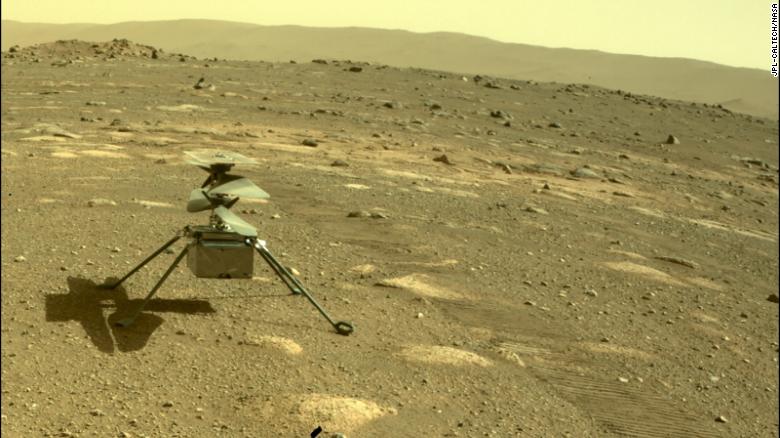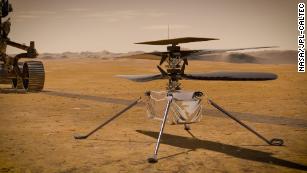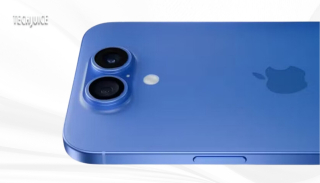The Ingenuity helicopter survived its first night on the freezing-cold surface of Mars – a significant milestone in the rotorcraft’s journey ahead of its historic first flight. Jezero Crater, an ancient lake bed on Mars and the current site of the Perseverance rover and Ingenuity helicopter, can drop to temperatures of minus 130 degrees Fahrenheit – low enough to do significant damage to the helicopter’s electrical and battery components.

Previously, NASA’s Mars rover known as ‘Perseverance’ dropped off ‘Ingenuity’ ahead of the four-pound aircraft’s historic first flight.
Swing low, sweet helicopter…@NASAPersevere is slowly and carefully deploying the #MarsHelicopter, Ingenuity. The tech demo is currently unfolding from its stowed position and readying to safely touch down on the Martian surface. See upcoming milestones: https://t.co/TNCdXWcKWE pic.twitter.com/3AyaiHOH2k
— NASA JPL (@NASAJPL) March 30, 2021
The helicopter dropped four inches from the belly of the Perseverance to the surface of Mars. Although four inches does not seem that big of a drop, the main agenda was to achieve a successful landing which is a significant milestone.
Ingenuity went through a series of movements to unfold from beneath the rover, which looked like a butterfly’s metamorphosis, before dropping the final 4 inches to the Martian surface.

When Ingenuity does fly, which could happen as soon as April 11, it will be the first powered, controlled flight on another planet. In a bid to pay tribute to the first such feat conducted on Earth, Ingenuity carries a swatch of fabric from the Wright brothers’ plane, Flyer 1.
Ingenuity also had to be lightweight to fly through the Martian atmosphere, which has just 1% of the atmosphere present on Earth, while still having enough power to self-heat and survive the frigid Martian nights.
Source: CNN
Read More: Scientists and architects are working on a new Mars city concept.












